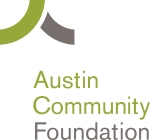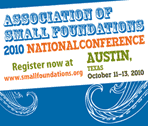
Rob increased the distance "to give my donors the feeling that they're getting their money's worth."
On September 2, Rob Cunningham will swim in Town Lake from the 360 Bridge to Tom Miller Dam, 4.1 miles total.
Then, in October, he’ll ride his bike from Dallas to Austin, 200 miles.
He’s not a “fitness freak,” per se. No, Rob’s more of a philanthropy freak. Because you don’t just jump in the lake or on a bike and go, by the time Rob completes these tasks, he will have trained for months, swam about 100 miles and biked about a 1,000. All to raise $4,000 and awareness for four Central Texas nonprofits.
And you can either make a pledge or purchase space on his arms — think, Your Ad Here.
“I honestly want my donors to think of me in a lot of pain on event day and to be satisfied that they’ve given money for a significant effort.”
As per usual when I come across crazy interesting people, I have to ask a lot of questions.
Q What are you doing, swimming out there in Town Lake every morning?
Usually trying to keep my mind off of how bad my arms hurt. That is, until they go numb.
I made a commitment to my supporters and four local nonprofit organizations to not only raise money but to complete this physical challenge.
Thinking of my supporters and the nonprofits that I’m working for is a pretty powerful motivator for long training sessions. I know that if I’m not out there training and getting ready, then I run the risk of falling short of my physical goal on event day, and I don’t want that to happen.
Plus we have a great team of 19 other Got2Swim(mers) who have taught me a lot. They’re a big group of fun loving people who make great training partners.
Q. Group training makes a difference. And no one ever does this stuff alone, do they?
My family has also been an integral part of my fundraising efforts over the last seven years. For the 100-mile-rides for the Ronald McDonald House, Amy, Finn and Barton served as our rest stop coordinators and traveled with our ride team, over a 10 hour day. In the sixth year of that ride Amy even took on the 100 mile challenge herself.
The memories that my family have from those events are some of the best memories we have together.
I’m also fortunate to work at FOX 7, a company that is a big part of the community and has a big commitment to giving back. I’m certainly not the only person at the station that supports a nonprofit or two throughout the year or raises money for a good cause.
To name only a few, there are ladies at the station that have a bake sale every year to raise money for the JDRF Walk to Cure Diabetes; Keri Bellacosa is on the Board of Directors of JDRF Austin; and Loriana Hernandez co-founded Maggie’s Hope, which is a nonprofit that helps families dealing with Autism.
From FOX 7’s the top floor down to the lobby we feel a strong sense of being a community builder here in Central Texas, and I’m just happy to be a part of it.
Q. Why did you choose these four organizations?
I chose the Ronald McDonald House, Colin’s Hope and the Capital Area Food Bank’s Kids Café Program because I like the idea of helping local kids. I may not be able to give my own kids everything I’d like but at least they know that they’ll always live in a loving home and (by the grace of God) always have food on the table.
It breaks my heart to think that not all kids are that fortunate so I gravitate to causes that focus on helping kids. I also like the idea of giving back to wounded soldiers in the U.S. Army Wounded Warrior program. Those “kids” deserve all the help we can give them.

Rob in the water, training for the big swim on Sept 2, with help from his wife.
Q. What’s your “dream” for all this? What impact do you hope to have?
This all started seven years ago when, as a new board member of the Ronald McDonald House, I was trying to figure out a way to make a significant financial contribution to the House. Since I couldn’t just write a check, I made an impromptu decision to ride my bike 100 miles and ask people to sponsor me by the mile. That year I raised $1,700.
After that first year, through word of mouth, other riders joined in the fun and over the six-year history of that ride together our ride team raised a little over $200,000 for the Ronald McDonald House.
Q. How can we support you?
You can support my 204.1 mile effort by making a donation on-line at www.Got2Give.org/rob.html. If you prefer to write a check you can make it out to Got2Give and mail it to 102 Squires Drive, Austin, Texas, 78734.
I’m also selling both of my arms to help raise money. I have ad space available on each shoulder for sale to a corporate sponsor for a donation $500 or more. Just think, I’ve been training really hard…your logo here?
(Editor’s note: Rob is about 6’13” tall, so no worries about running a big logo.)
Trying to raise a minimum of $4,000 I really need support from anyone and everyone in the community that I can reach for both small and large donations, they’re all important and every donation makes a difference.
I was thinking that if all of my Twitter followers and Facebook friends donated just $10 that would equal $8,000, which is a real illustration of how everyone can help no matter what size the donation is.
Filed under: Children's Services, Creative fundraising, Events, Giving opportunities, Interview, What it's like to give, What it's like to lead, What it's like to volunteer | Tagged: austin charity, Austin philanthropy, Austin volunteering, CAFB, Colin's Hope, community service, cycling, fitness, Fox 7, fundraising, giving, how to, Rob Cunningham, Ronald McDonald House Charities, volunteer opportunities in Austin, Wounded Warrior | 1 Comment »
 The diversity of backgrounds, perspectives and ideas blows me away. But what all our New Philanthropists have in common is a commitment to Austin. They tend to work outside the traditional nonprofit structure, creating their own points of engagement or standing out among their peers for their dedication to their cause.
The diversity of backgrounds, perspectives and ideas blows me away. But what all our New Philanthropists have in common is a commitment to Austin. They tend to work outside the traditional nonprofit structure, creating their own points of engagement or standing out among their peers for their dedication to their cause.










